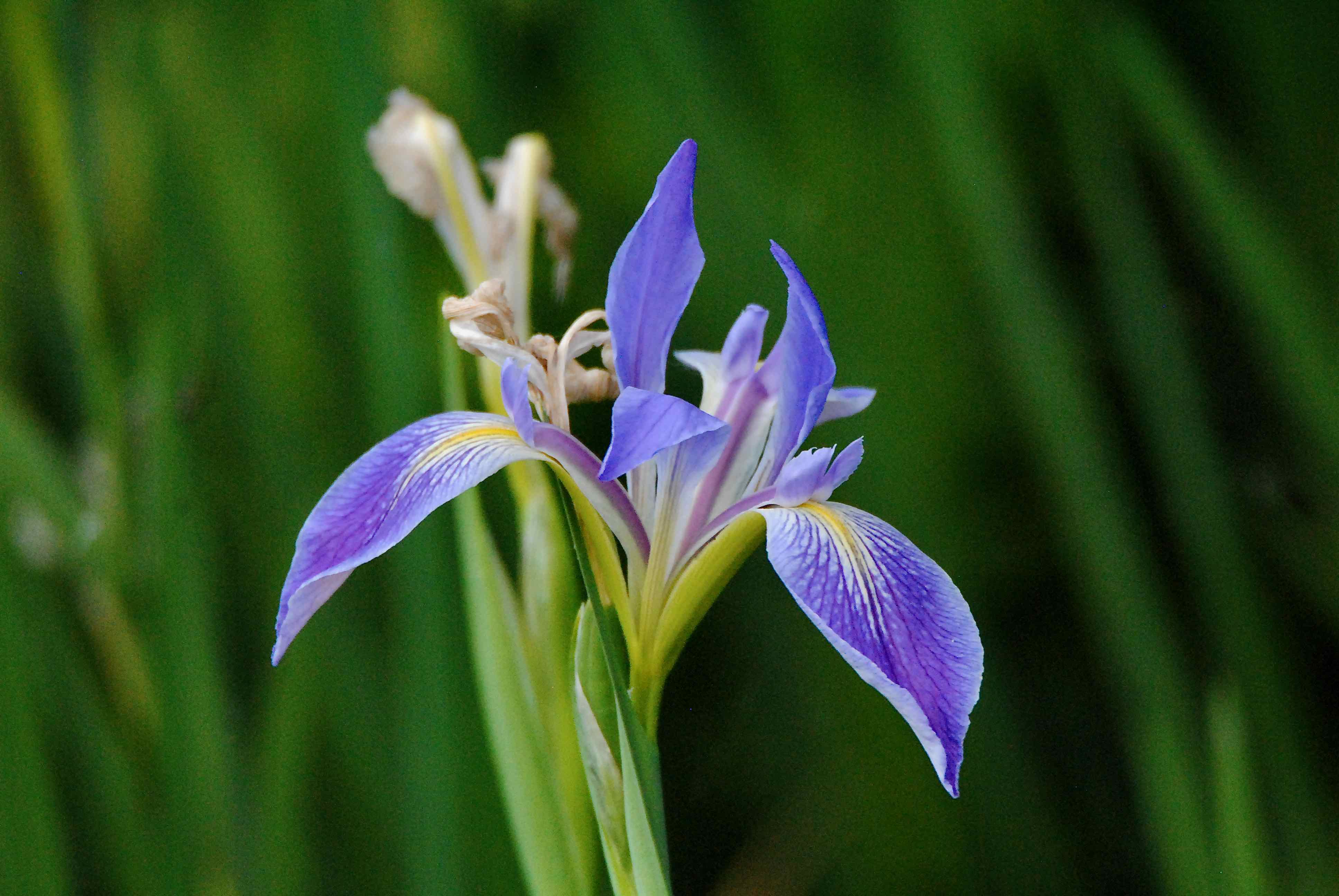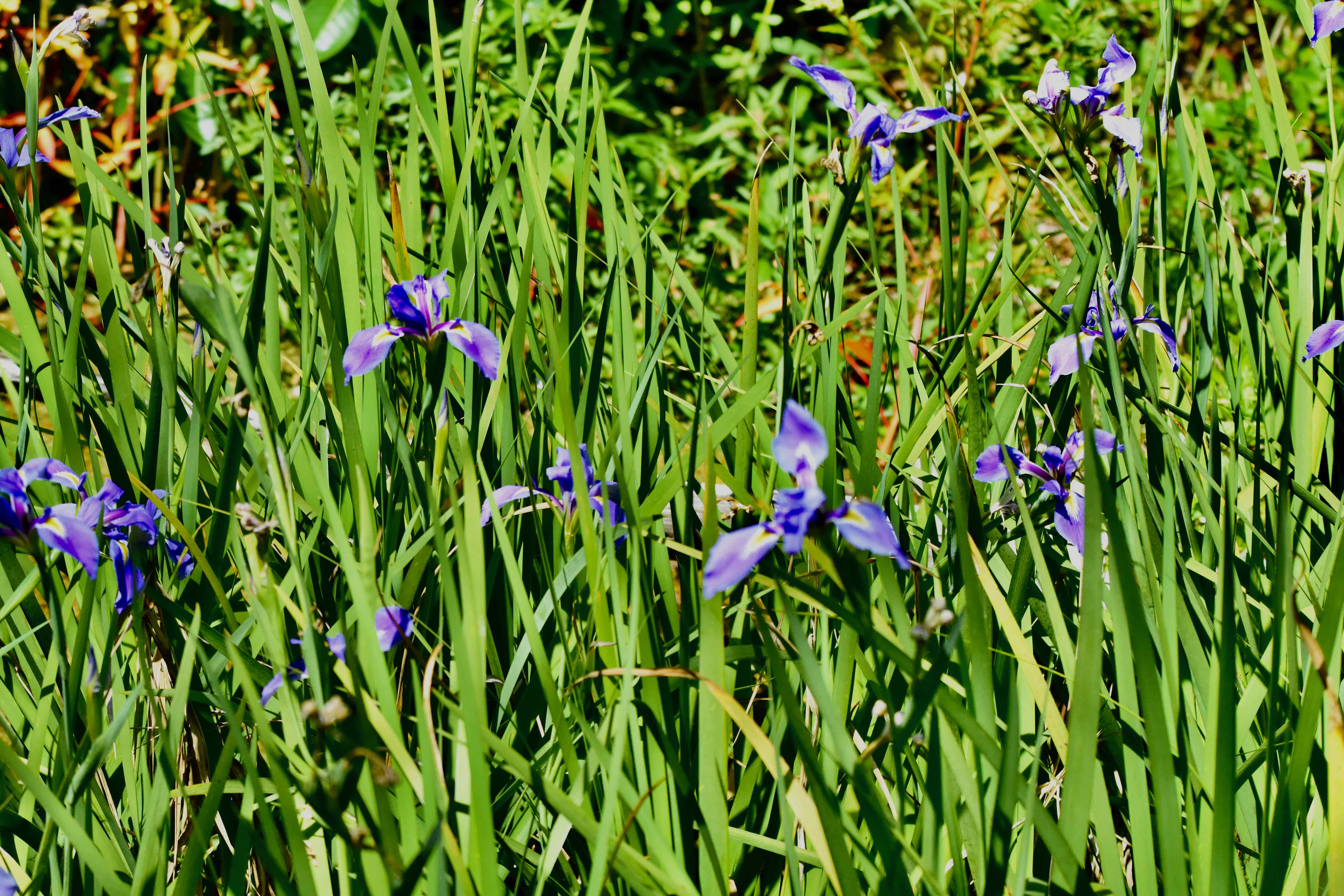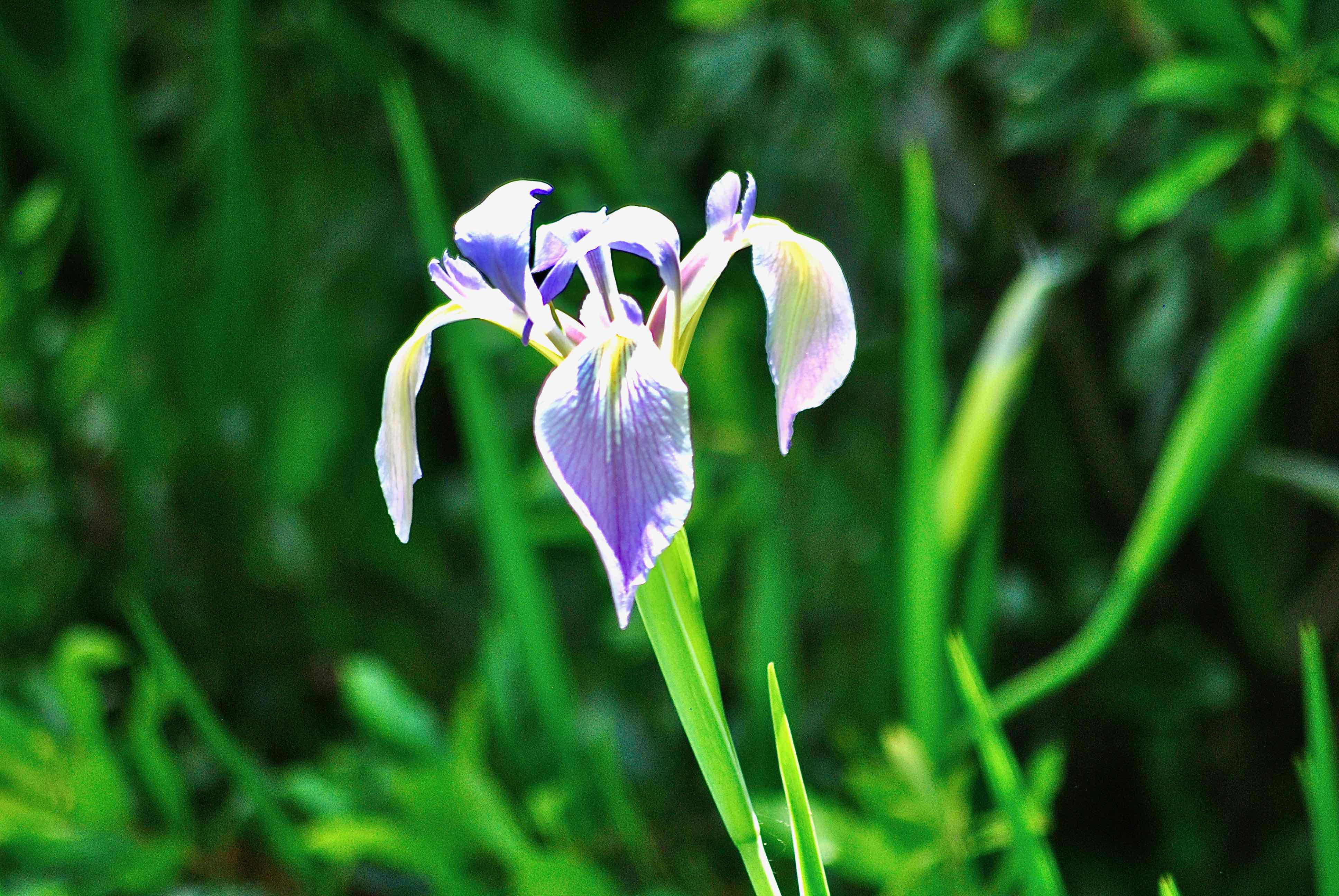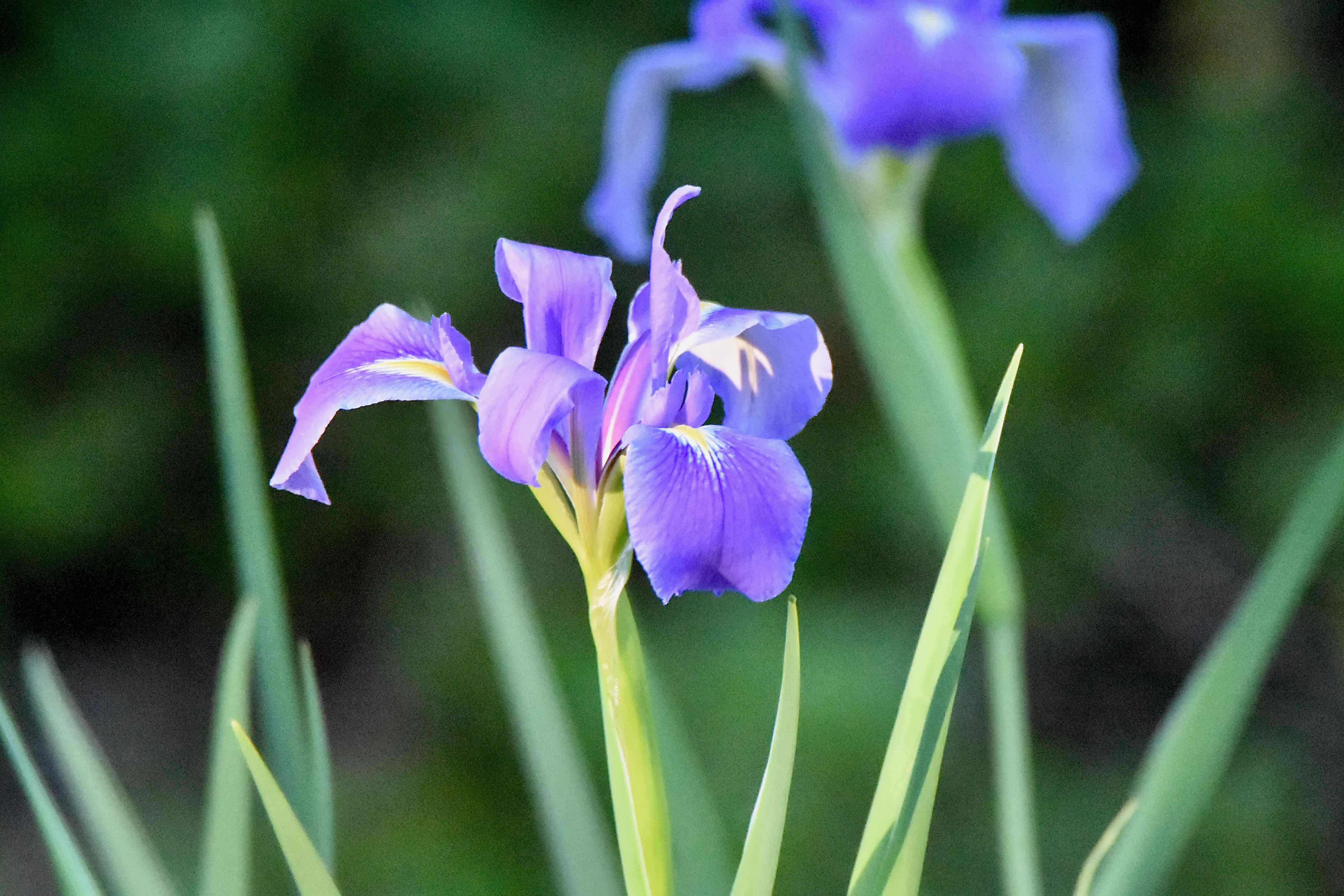
Dixie iris, photographed at Loxahatchee National Wildlife Refuge, Boynton Beach, Palm Beach County, in March 2017.
Dixie iris, Iris hexagona, for our money is the most spectacular of the wetland flowers. There's no shortage of beauty in Florida's wet habitats, but we give the edge to the dixie iris not only because of its extraordinary beauty but also because of its rarity and limited blooming time.
You'll see it in late winter to early spring; by April or so, it's pretty much run its course. Wild populations are rare in South Florida. In fact, the photos on this page, taken at Loxahatchee National Wildlife Refuge and Green Cay Nature Center, both in Palm Beach County, are almost certainly not wild. "Vouchered," or scientifically verified specimens, from wild populations have been found in Palm Beach, Collier and Lee counties, but dixie iris has a wider distribution in central and northern parts of the state, including the Panhandle. Its rare enough that the Institute for Regional Conservation considers it imperiled in South Florida, but it is not listed by any agency as threatened or endangered. It is, however, widely grown as a landscaping plant.
Dixie iris flowers are large and vary in color from pink to white (rarely) to light blue to deep blue to purple, but always with a patch of yellow called a "signal." Each flower has three sepals (the outer part of the flower), which curve downward, and three petals, which are smaller than the sepals and curve upward. The sepals are the parts with the yellow signals, which help pollinators find the flower's throat, which holds nectar and reproductive parts. The leaves are bright green, swordlike in shape and about three feet long. They overlap at the base. The flowers eventually give way to a six-angled seed capsule, which is the source of the plant's scientific name, hexagona.
Dixie iris grows in clumps, spreads by rhizomes, or underground stems. The plant is narrow, but those rhizomes help it form substantial clumps that can be fairly large. In winter, Dixie iris goes dormant.
Dixie iris is part of what's called the Louisiana series of water-loving irises, and favorite habitats include swamps, marshes, wet prairies and the edges of ponds, lakes and streams. The United States Department of Agriculture's PLANTS database says it's found throughout the Southeast as far north as Missouri and Kentucky and as far west as Texas.
Dixie iris is widely cultivated and used in landscaping, but it requires moist to wet soil (we've read where some solve the problem by planting it where their air conditioner drains). It also likes rich, organic soils that are on the acidic side and a site that is partially shaded. It can be grown from seed or by division.
By the way, the rhizomes and root parts are poisonous, according to Cornell University. The species most affected: Cattle, pigs and humans.
There are five species of iris native to Florida, but the Dixie is the only one found this far south. There are two non-native species that have become naturalized, or found growing wild, including Iris pseudoacorus, which has a yellow flower and I. Fulva, which has a reddish flower.
A note: The taxonomy on this plant is more than a tad confusing. The USDA recognizes three subspecies of dixie iris, two of which are found in Florida. Some authorities classify the two under a single name, I hexagona, while some authorities recognize the two subspecies, I. hexagona var hexagona and I. hexagona var. Savannarum. Still others, including the Florida Atlas of Vascular Plants classifies the two as separate species. I. h. Savannarum becomes I. Savannarum, commonly known as savanna iris or prairie iris. That would be the iris found in South Florida, and the range of dixie iris, hexagona instantly shrinks to a few counties in the Big Bend region of Florida.
Dixie iris is a member of Iridaceae, the iris family.
Click on photo for larger image
U.S. Department of Agriculture Distribution Maps


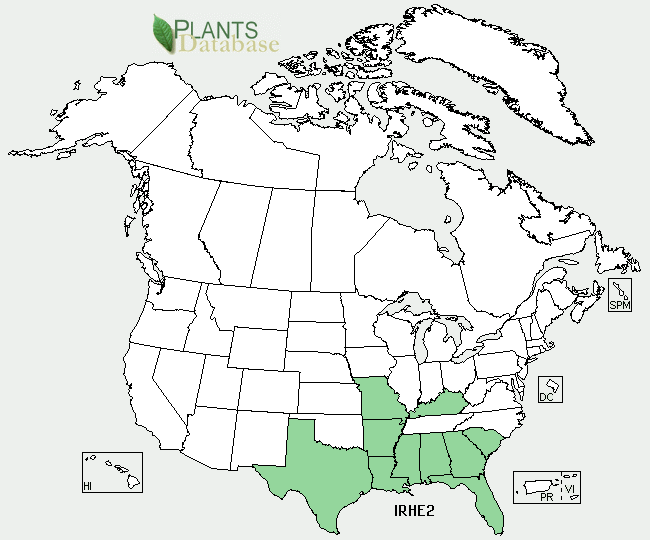
Links for Dixie Iris

